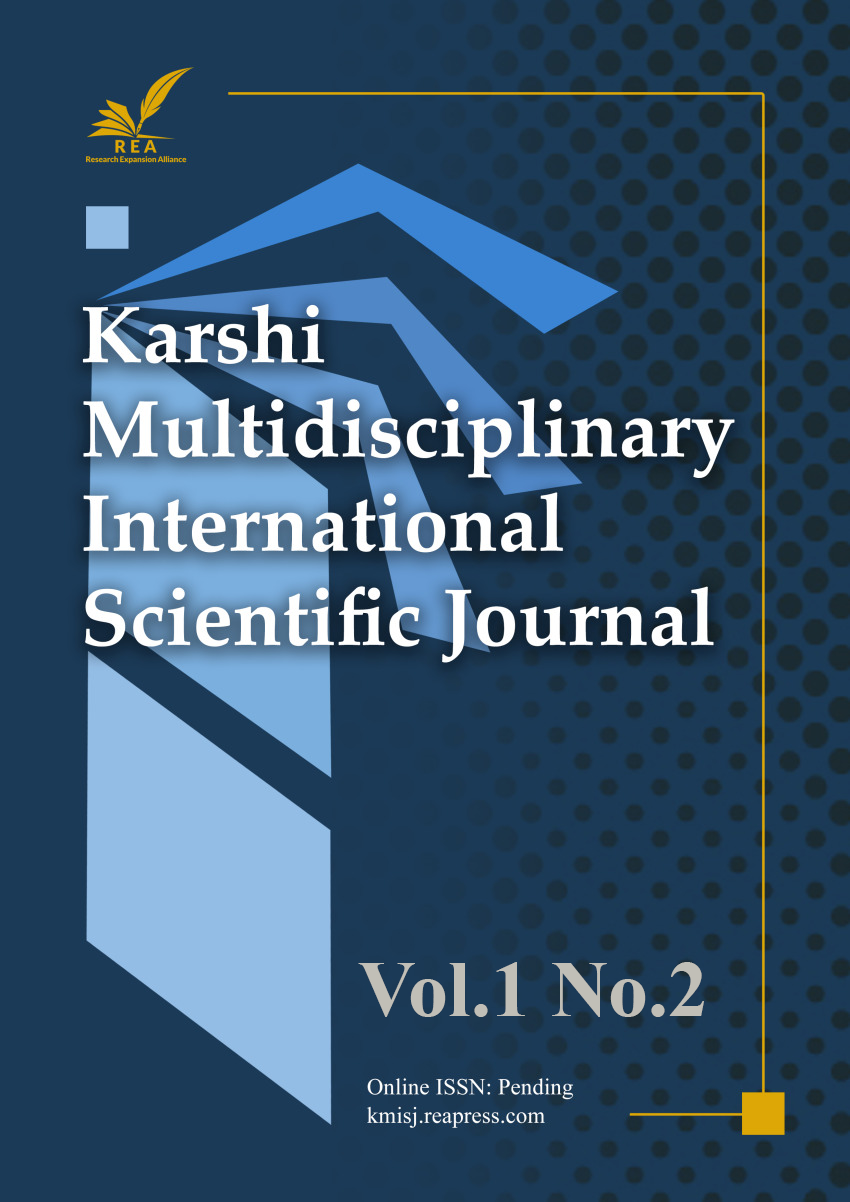Extension of the Gradient Effect on Eigenenergies to the “Electric Stern-Gerlach” Effect With Square of theLinearized Field
DOI:
https://doi.org/10.22105/kmisj.v1i2.64Keywords:
Electric dipole moment, Polarizability matrix, Analogy with the Stern-Gerlach effectAbstract
In this paper, we constructed a solution of the Schrödinger equation for the ammonia molecule, modeled as a particle with a permanent electric dipole moment, which can access only two quantum states, as part of a beam of these molecules entering a region where an electrostatic field with a weak gradient act. In this solution, the contribution of the electric field gradient to the eigenenergies of the molecule stands out in the context of linearization of the square of one of the components of the electrostatic field. This result indicates that the analogy established between the spatial separation of this beam of molecules and the spatial separation of silver atoms in the inhomogeneous magnetic field in the Stern-Gerlach effect is not limited only to spatial separation; the gradient effect on eigenenergies, recently identified in the Stern-Gerlach case, also manifests itself in the case of ammonia molecules in an inhomogeneous electrostatic field.
References
J.D. Bulnes, M.A.I. Travassos, D.A. Juraev, J. López-Bonilla, From the Hamilton-Jacobi equation to the Schrödinger equation and vice versa, without additional terms and approximations, Himalayan Physics, 11, 21–27 (2024).
J.D. Bulnes, M.A.I. Travassos, D.A. Juraev, G. Dias and J. López-Bonilla, Mathematical simulation of à la Einstein loss of the non-separable character of a function for two particles at the quantum-classical boundary, Open Journal of Mathematical Sciences, 8, 113–127 (2024).
J.D. Bulnes, M.A.I. Travassos, D.A. Juraev, J.E. Ottoni, J. López-Bonilla, Stern-Gerlach Centennial: Parity, gradient effect, and an analogy with the Higgs field, Himalayan Physics, 11, 68–77 (2024).
J.D. Bulnes, An unusual quantum entanglement consistent with Schrödinger’s equation, Global and Stochastic Analysis, 9, 79–87 (2022).
J.D. Bulnes, M.A.I. Travassos, H.E. Caicedo-Ortiz, J. López-Bonilla, Más de un tipo de entrelazamiento en el mundo cuántico y ninguno en el mundo clásico, Journal de Ciencia e Ingeniería, 16:1, 5–12 (2024).
J.D. Bulnes, D.A. Juraev, J.L. López-Bonilla, M.A.I. Travassos, Exact de coupling of a coupled system of two stationary Schrödinger equation, Stochastic Modelling Computational Sciences, 3, 23–28 (2023).
J.D. Bulnes, J.L. López-Bonilla, D.A. Juraev, Klein-Gordon’s equation for magnons without non-ideal effect on spatial separation of spin waves, Stochastic Modelling and Computational Sciences, 3:1, 29–37 (2023).
J.D. Bulnes, J.L. López-Bonilla, Dirac’s linearization applied to the functional, with matrix aspect, for the time of flight of light, Maltepe Journal of Mathematics, 4:2, 38–43 (2022).
J.D. Bulnes, Solving the heat equation by solving an integro-differential equation, Global and Stochastic Analysis, 9:2, 89–97 (2022).
J.D. Bulnes, F.A. Bonk, A case of spurious quantum entanglement originated by a mathematical property with a nonphysical parameter, Latin-American Journal of Physics Education, 8, 4306-1–4306-4 (2014).
J.D. Bulnes, L.A. Peche, Entrelazamiento cuántico espúrio con matrizes seudopuras extendidas 4 por 4, Revista Mexicana de Física, 57, 188–192 (2011).
J.D. Bulnes, Propagadores cuánticos calculados de acuerdo con el postulado de Feynman con caminos aproximados por polinomios, Revista Mexicana de Física, 55, 34–43 (2009).
J.D. Bulnes, I.S. Oliveira, Construction of exact solutions for the Stern Gerlach effect, Brazilian Journal of Physics, 31:3, 488–495 (2001).
D.A. Juraev, N.M. Mammadzada and M. Israr, On the Application of Ill-posed problems of equations of mathematical physics, Karshi Multidisciplinary International Scientific Journal, 1:2, 43–50 (2024).
D.A. Juraev, P. Agarwal, A. Shokri, E.E. Elsayed, Integral formula for matrix factorizations of Helmholtz equation, Recent trends in fractional calculus and its applications, advanced studies in complex systems, Elsevier, pp. 123–146 (2024).
D.A. Juraev, P. Agarwal, A. Shokri, E.E. Elsayed, Cauchy problem for matrix factorizations of Helmholtz equation on a plane, Recent trends in fractional calculus and its applications, advanced studies in complex systems, Elsevier, pp. 147–175 (2024).
D.A. Juraev, P. Agarwal, A. Shokri, E.E. Elsayed, The Cauchy problem for matrix factorizations of Helmholtz equation in space, Recent trends in fractional calculus and its applications, advanced stud ies in complex systems, Elsevier, pp. 177–210 (2024).
D.A. Juraev, Y.S. Gasimov, On the Regularization Cauchy Problem for Matrix Factorizations of the Helmholtz Equation in a Multidimensional Bounded Domain, Azerbaijan Journal of Mathematics, 2:1, 142 (2022).
D.A. Juraev, Solution of the Ill-posed Cauchy problem for matrix factorizations of the Helmholtz equation on the plane, Global and Stochastic Analysis, 8:3, 1–17 (2021).
D.A. Juraev, A.A. Tagiyeva, J.D. Bulnes and B. Drumea, On the regularization of the Cauchy problem for matrix factorizations of the Helmholtz equation in Rm, Karshi Multidisciplinary International Scientific Journal, 1:2, 51–68 (2024).
D.A. Juraev, N.M. Mammadzada, J.D. Bulnes, S.K. Gupta, G.A. Aghayeva, V.R. Ibrahimov, Regularization of the Cauchy problem for matrix factorizations of the Helmholtz equation in an unbounded domain, Mathematics and Systems Science, 2:2, 1–16 (2024).
D.A. Juraev, A.A. Tagiyeva, J.D. Bulnes and G.X.-G. Yue, On the solution of the Ill-posed Cauchy problem for elliptic systems of the first order, Karshi Multidisciplinary International Scientific Journal, 1:1, 17–26 (2024).
D.A. Juraev, P. Agarwal, A. Shokri, E.E. Elsayed, J.D. Bulnes, On the solution of the Ill-posed Cauchy problem for elliptic systems of the first order, Stochastic Modelling & Computational Sciences, 3, 1–21, (2023).
R.P. Feynman, R. Leighton, M. Sands, Feynman Lectures on Physics, Vol. III, Addison-Wesley, Massachusetts (1965).
C. Cohen-Tannoudji, B. Diu, F. Laloe, Quantum Mechanics, Vol. I, Hermann and Wiley, Paris (1977).
M. Alonso, E.J. Finn, Fundamental University Physics, Quantum and Statistical Physics, Vol. III, Addison-Wesley (1968).
A. A. Vuylsteke, Maser states in Ammonia - Inversion, American Journal of Physics, 27, 554 (1959).
S. Ladak, D. E. Read, G. K. Perkins, L. F. Cohen and W. R. Branford, Direct observation of magnetic monopole defects in an artificial spin-ice system, Nature Physics, 6, 359–363 (2010).
T. Liu, R. Xue, B. Ding, D.A. Juraev, B.N. Saray, F. Soleymani, A novel and effective scheme for solving the fractional telegraph problem via the spectral element method. Fractal and Fractional, 8:12, 1–16 (2024).
I.E. Niyozov, D.A. Juraev, R.F. Efendiev, M.J. Jalalov, The Cauchy problem for the system of elasticity. Journal of Contemporary Applied Mathematics, 14:2, 92–107 (2024).

